Ketchup-flavored chicken fried rice bundled up in a thin layer of tender omelette, Omurice is a classic Japanese home-cooked dish. Every bite is bursting with comforting flavors! No wonder it’s so popular among kids and adults alike.

There are a lot of hybrid foods in Japan. Today’s recipe—Omurice (オムライス) or Japanese Omelette Rice—is a beloved hybrid invention that people consider everyone’s favorite childhood dish in Japan. Here, we have fried rice and fluffy omelette come together to make one comforting food that live fondly in our hearts.
Why You’ll Love This Omurice Recipe?
- Quick and easy — You’ll need only 20 minutes to make the dish.
- Leftovers and pantry-friendly — Japanese home cooks like making it using leftover rice as it makes a perfect single-plate meal to prepare the next day. For the rest of the ingredients, you’ll need just the usual staples in the pantry. These include eggs, frozen mix veggies or any basic veggies, and a choice of protein (chicken, ham, bacon, or tofu).
- Hearty and satisfying — It has protein, veggies, and rice, and packed with flavors. My children absolutely loved it when they were little.
The soft-cooked omelette and the sweet and tangy rice complement each other very well, so I hope you will enjoy this recipe!

What is Omurice?
Omurice (pronounced as o-muraisu in Japanese) is a contemporary Japanese fusion creation that marries both Western omelette and Japanese fried rice. As you can tell, the word “omurice” comes from Japanese portmanteau for omelette (omelet) and rice, resulting in the name omelette rice or omelet rice.
👉🏻 Interested to learn more about the origin and variations of omurice? I’ve talked more at length in my other omurice recipe inspired by the Japanese drama ‘Midnight Diner’. You can read it here.
The rice is pan-fried with ketchup and chicken, then wrapped in a thin sheet of egg omelette which gives the dish a signature oval shape.
This classic yōshoku (Western-style Japanese food) is a staple home cooked dish but you can also find it at many Western food diners in Japan.
What is the Best Rice Cooker
Leftover rice is best for omurice, but if you don’t have any on hand, I like to use my Zojirushi NP-NWC10XB Rice Cooker. It makes fluffy rice every time, and it’s the best Japanese rice cooker I’ve ever used! You can get it on Amazon for $458.29, and it’s well worth it if you cook a lot of rice.
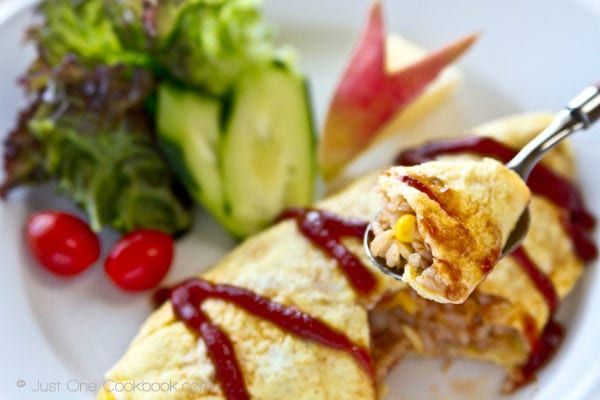
Other Easy Japanese Rice Dishes You’ll Love
- Japanese Fried Rice (Yakimeshi)
- Japanese Corn Rice
- Oyakodon (Chicken and Egg Bowl)
- Okinawan Taco Rice
- Curry Doria Rice Gratin
Wish to learn more about Japanese cooking? Sign up for our free newsletter to receive cooking tips & recipe updates! And stay in touch with me on Facebook, Pinterest, YouTube, and Instagram.

Omurice (Japanese Omelette Rice)
Ingredients
For the Ketchup Fried Rice
- ½ onion
- 1 boneless, skinless chicken thigh
- 1 Tbsp extra virgin olive oil
- ½ cup frozen mixed vegetables (defrosted)
- ⅛ tsp Diamond Crystal kosher salt
- ⅛ tsp freshly ground black pepper
- 2 servings cooked Japanese short-grain rice (1¾ cups, 330 g; cooled; day-old rice, preferably)
- 1 Tbsp ketchup (plus more for garnish)
- 1 tsp soy sauce
For the Omelettes
- 2 large eggs (50 g each w/o shell) (divided)
- 2 Tbsp milk (divided)
- 2 Tbsp extra virgin olive oil (divided)
- 6 Tbsp shredded sharp cheddar cheese (or any other kind)
Instructions
- Before You Start: Day-old rice works best for fried rice. Bring the refrigerated day-old rice or frozen rice to room temperature. If you don‘t have day-old rice, you can cook 1 rice cooker cup (¾ US cup, 180 ml) of short-grain rice, then spread out the hot rice on a baking sheet to cool completely. See how to cook Japanese rice with a rice cooker, pot over the stove, Instant Pot, or donabe).
- Gather all the ingredients.

To Make the Ketchup Fried Rice
- Mince ½ onion finely into ⅛-inch (3-mm) pieces.

- Dice 1 boneless, skinless chicken thigh into ½-inch (1.3-cm) pieces.

- Heat 1 Tbsp extra virgin olive oil in a large frying pan over medium heat and sauté the onions until tender.

- Add the chicken and cook until it's no longer pink.

- Add ½ cup frozen mixed vegetables (defrosted) and season with ⅛ tsp Diamond Crystal kosher salt and ⅛ tsp freshly ground black pepper.

- Add 2 servings cooked Japanese short-grain rice. Use a cutting motion with your spatula to break the clumps into small pieces.

- Add 1 Tbsp ketchup and 1 tsp soy sauce and stir to combine. Transfer the fried rice to a plate and wash the pan.

To Make the Omurice
- We‘ll make the omurice one at a time. Whisk 1 egg and 1 Tbsp milk in a small bowl.

- Heat 1 Tbsp oil in the pan over medium-high heat. Distribute the oil to make sure the surface of the pan is coated well.

- When the pan is hot, pour in the egg mixture and tilt the pan to coat the entire surface with the egg. Cook the egg until the bottom has set but the top is still soft. Lower the heat to medium low.

- Sprinkle 3 Tbsp shredded cheese on top, then add 1 serving of ketchup fried rice across the middle of the omelette.

- Use the spatula to fold both sides of the omelette over the middle to cover the fried rice. Carefully move the omurice to the edge of the pan.

- Holding a plate in one hand and the pan in the other, flip the pan to transfer the omurice, seam side down, onto the plate.

- While it’s still hot, cover the omurice with a paper towel and form it with your hands into an elongated oval shape (similar to an American football or rugby ball). Repeat to make the next omurice.

To Serve
- Drizzle additional ketchup in a zigzag pattern on top for decoration and enjoy.

To Store
- You can keep the leftovers in an airtight container and store in the refrigerator for up to 3 days or in the freezer for a month.
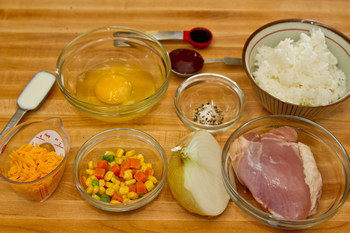


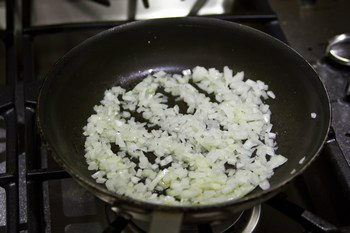

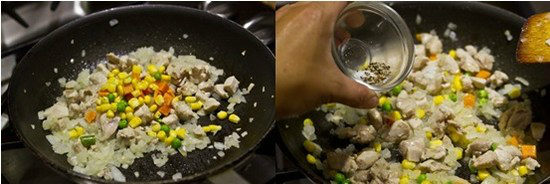
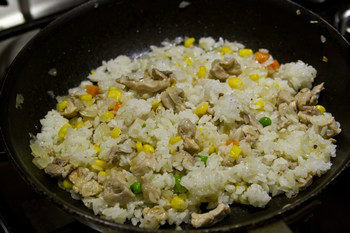




















Thanks for the recipe! I’ve tried a couple different variations but I like this one best! I love trying out recipes from other countries it’s like a taking a mini vacation and trying out the local cuisine. One day I’ll get to go to Japan for real and try out all the local dishes in person.
Hello, Derrioc. Aww. We are pleased that you think Nami’s recipe is the best. And we like how you think about trying different countries’ cuisines!
We hope you enjoy our travel and culture posts too. ☺️
Travel:
https://www.justonecookbook.com/categories/travel/
Culture:
https://www.justonecookbook.com/categories/japanese-culture/
The overall recipe is delicious, but the cheese and olive oil didn’t work out for me. I omitted the cheese all together and swapped oil with butter. It turned out soo good!
Hello, Eiri! Thank you for experimenting with Nami’s recipe!
We are relieved to hear that everything worked out in the end. Thank you for your feedback!
This is a weird version of the Japanese omurice I grew up with in Osaka. Cheese?!?!
Hi Emi! Thank you for reading Nami’s post and trying her recipe!
Yes! Cheese! Nami use shredded sharp cheddar cheese, but it can be any kind.
We hope you will give it a try!🙂
Thank you for the amazing recipe! One quick question: is the calorie number for one singular serving of omurice, or for two as the recipe yields? Thanks 🙂
Hi Kathryn, Thank you very much for your kind feedback!
The nutrition information is for approximately one serving with sauce.
We hope this helps!
Thank you so much for this recipe, we love it and especially being able to use leftovers inside – so yummy and now a regular lunchtime dish for us!
We used leftover soboro don – so gorgeous I might be making it especially for omurice 🙏
Hi Jill! Nami and JOC team are so happy to hear you enjoyed Omurice!
Thank you very much for trying Nami’s recipe and for your kind feedback.
Happy Cooking!🥰
Thank you for the recipe! I’d always wanted to try this, but I finally got around to it. It was pretty good! I enjoyed it, and I’ll make it again. I’ve been trying to eat healthier, and this seemed like a good option. I didn’t know how long to cook the egg to get it right since I haven’t made an omelette before. I wasn’t sure what a set bottom but soft top looked like. I ended up overcooking the egg, but it still turned out delicious. I also added a bit more ketchup and soy sauce than the recipe said since the rice tasted a little bland to me. Either way, it was delicious. Thank you so much! I’ll definitely be trying more of your recipes in the future!
Hi Ria! Thank you very much for trying Nami’s recipe!
When the edge of the egg starts to dry out, the bottom is most likely set. But the top should be soft still at the time when you add the cheese.
We hope this helps with your next try! Happy Cooking!